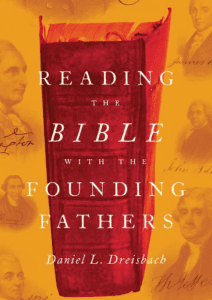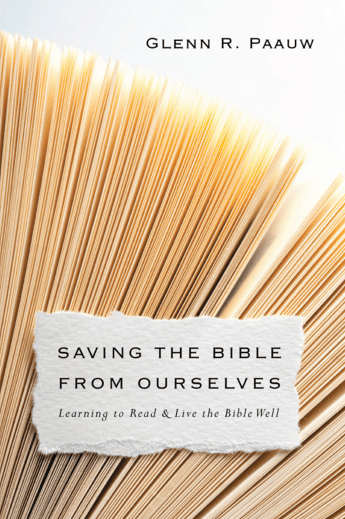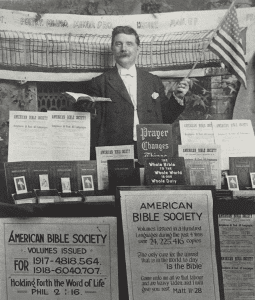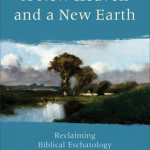Go to your Bible, open up to the New Testament, and you will find a collection of 27 books — every New Testament begins with Matthew and everyone ends with Revelation (not Revelations). 27 books is taken for granted today but for about 400 years that wasn’t the case. In fact, there was no such thing as a “New Testament” for a long time, and even then there were some books still in dispute. There is no need to resort to conspiracy theory here, but at least we should recognize that these books were not golden tablet like books dropped from the sky with the obvious and indisputable marks of divinity. Luther, in the 16th Century, spoke disparagingly about some books in the New Testament.
Is there space in your church for teaching this topic? Do ordinary Christians know how we got our Bible?
How did it happen? Warren Carter, in his book Seven Events that Shaped the New Testament World, proposes a five-fold process. But he observes this process is known only after the event. As he says, When Paul wrote Romans he didn’t propose sending it to the canon selection committee! (Think about that, or have a discussion with someone about it.)
Stage 1: Writing: the texts were written over time, they were sometimes issued in more than one edition, they interacted with one another, they bring together bits and bobs from early Christian settings (like hymns and confessions), some books were written (by Paul) that didn’t make it…
Stage 2: Use: these texts were used by early Christians in various settings, often in church gatherings where the writings were read aloud. He refers and quotes Justin’s First Apology 67. (Look it up.)
Stage 3: Collections. Eventually folks began collecting various books into groups, and the earliest one appears to be Gospels, but also there were collections of Paul’s letters and of the other letters. Some disputed the four fold Gospels and proposed a harmony of them (Tatian’s Diatesseron).
Stage 4: Lists and Selection. A major list, provided not long ago on this blog, was the Muratorian Canon. But there are some important observations about early listings: some books were secure, but not all of our NT books made each list; some books were disputed and some of these did make it; some books were definitely not in but were to be read (Didache, Shepherd of Hermas, et al). Some disputed books include James, Jude, 2 Peter, 2 and 3 John, Revelation. One of the earliest “whole” NT manuscripts has all 27 books but also has Epistle of Barnabas and Shepherd of Hermas.
Stage 5: Ratification. Between 350 and 400 AD the 27 books were settled upon, not all at once, not by one group though Athanasius (367) had the 27 list as we have it and in 397 the Council of Carthage listed the 27 books though not all accepted Carthage. Luther wasn’t fond — according to Carter — of Hebrews, James, Jude and Revelation.
So there we have it: God gave us the NT but didn’t drop the books from the sky. They came to the surface in the church over time and with some struggle.
The arguments used were things like antiquity, apostolicity, acceptable theological content, and widespread use (catholicity). These were judgments, used in a variety of ways for different books, but I do think Carter doesn’t value enough the regula fidei to Nicea as a major substance shaper of what was NT and what was not. What was within the canon of faith was put in the canon of Scripture.











